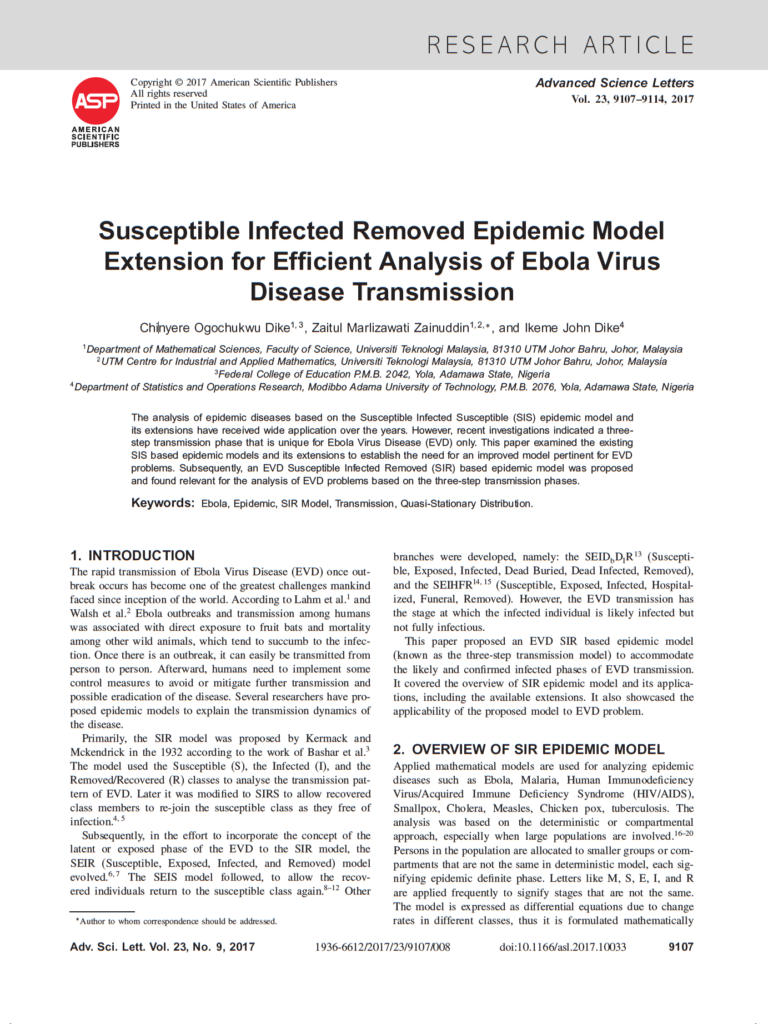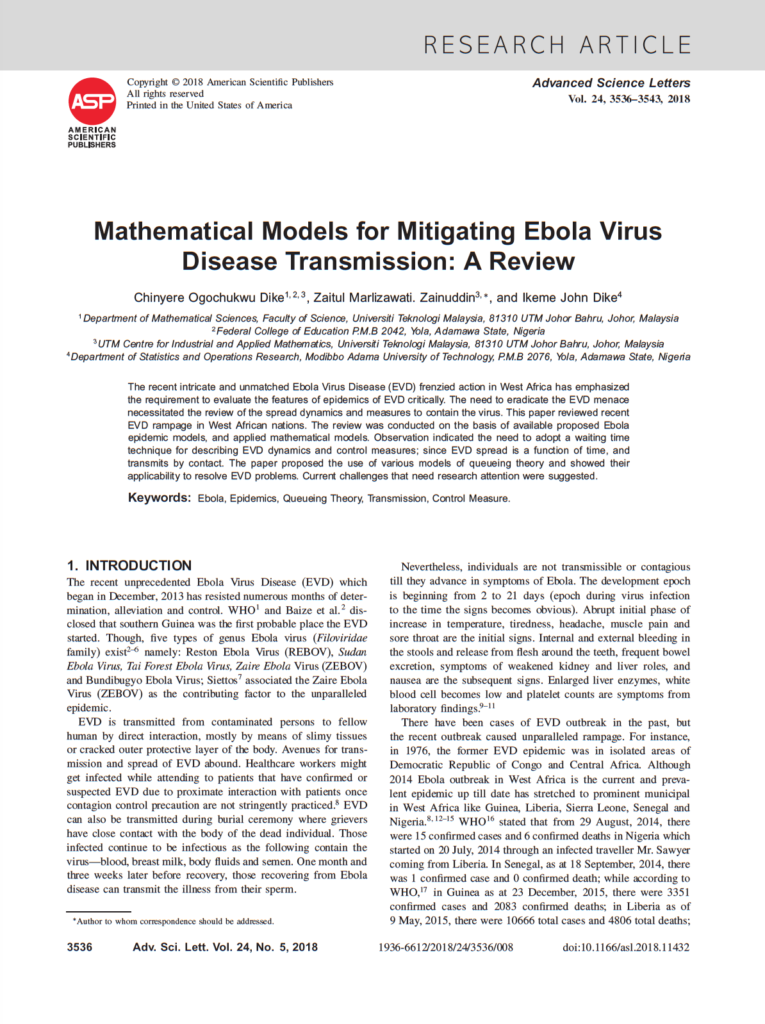Assoc. Prof. Dr. Zaitul Marlizawati Zainuddin
The 2019–20 coronavirus pandemic is an ongoing global pandemic of coronavirus disease 2019 (COVID-19) caused by the severe acute respiratory syndrome coronavirus 2 (SARS-CoV-2). The virus first emerged in Wuhan, Hubei, China in December 2019, spreading to every province-level division of the country by February 2020. The virus spreads between people in a way similar to influenza, via respiratory droplets from coughing or sneezing. The time between exposure and symptom onset is typically five days but may range from two to fourteen days.
The virus disease transmission of COVID-19 may be similar to the Ebola Virus Disease (EVD) transmission. We have studied the spread of the Ebola virus using mathematical models. The way the Ebola virus disease invades countries differs due to socio-cultural factor differences and population behavioural factor differences. Also, the epidemic of EVD happens in batches sometimes, thereby generating a queue for each outbreak. Hence, there is a need to develop models to explain each individual queue due to an outbreak as well network of EVD queues.
Mathematical models for virus disease transmission
The recent intricate and unmatched Ebola Virus Disease (EVD) frenzied action in West Africa has emphasized the requirement to evaluate the features of epidemics of EVD critically. The need to eradicate the EVD menace necessitated the review of the spread dynamics and measures to contain the virus. Recent EVD rampage in West African nations. Applied mathematical models were proposed for the Ebola epidemic and indicated that the need to adopt a waiting time technique for describing EVD dynamics and control measures; since EVD spread is a function of time, and transmits by contact. Current challenges for the 2019–20 coronavirus pandemic need research attention.






